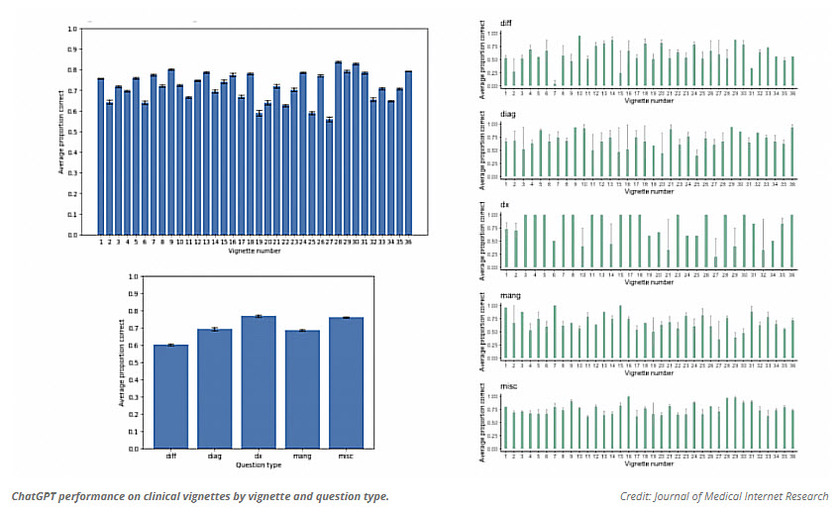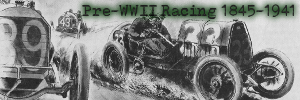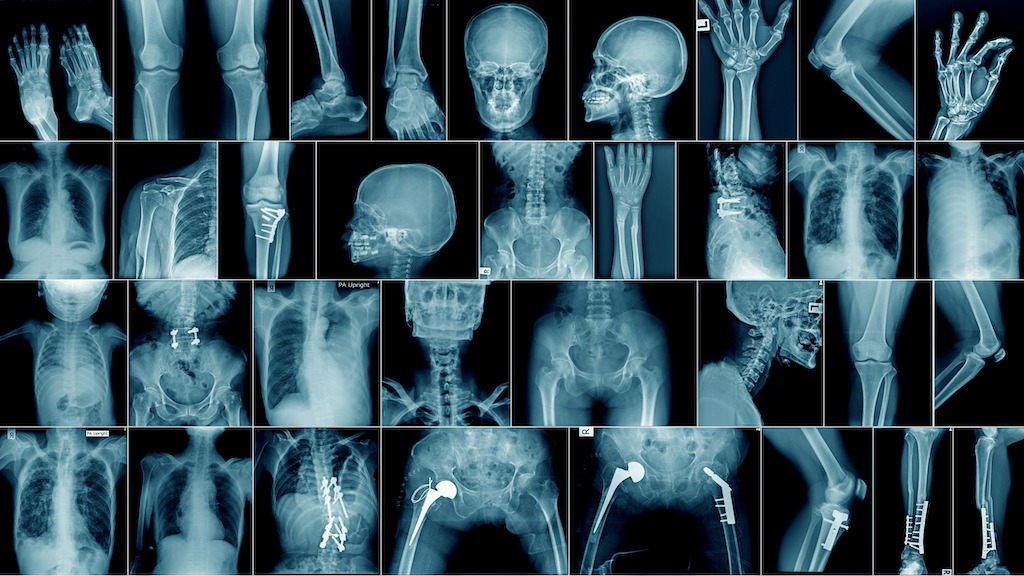Automobile racing started in Europe after the invention of the gasoline- (petrol-) fueled internal-combustion engine in the 1880s. The Americans started a few years after on old horse tracks after American grew tired of bicycling racing. Many of the American races occurred in Detroit, Buffalo and Cincinnati meets. Automobile manufactures also noted that racing gave the machines much publicity and fast motor cars began to make their appearance in this country in large numbers.
In 1901 such men as Henry Fournier, Alexander Winton and his famous "Bullet," and Herbert Lytle sprang into prominence, while as amateurs William K. Vanderbilt, Jr., and Foxhall Keene set people talking about them. Shortly afterward Barney Oldfield began to do track stunts, also Harry Harkness and Edgar Apperson. Some of these fellows could reel off miles on running and trotting tracks in about 1:12. It was the beginning of a big and mighty expensive form of sport.
In time more drivers kept cropping up; Joe Tracy, Al Poole, Maurice Bernin, Charles Basle appearing in 1904, winning races at Empire City track and elsewhere. Steam cars began to make fast time on tracks, notably old "Whistling Billy," that noisy car which Webb Jay drove, and later made a steam record for mile tracks of 0:48 3-5, a remarkable record which has never been beaten by any sort of car. Freaks in those days were quite numerous, and most track events were confined to short distances–the 24-hour variety not having come into vogue, for very good reasons. Track work paved the way for road racing.
Now famous tracks started to appear such as in 1903 that W. J. Morgan "discovered" the famous Ormond-Daytona beach course, undoubtedly the greatest straightaway course for racing in the world. Thither went a number of fast cars and set up new world's records for the mile, ten-mile, and kilometer distances. The next Winter saw Ormond as a mecca for motor enthusiasts. New world's records from one to fifty miles were smashed; the most notable performer being William K. Vanderbilt, Jr., in his 90 horse power Mercedes, who broke the one, five, ten and intermediate marks from twenty to fifty miles. The young amateur was credited with a mile in 39 seconds and ten miles in 6:50.
1905 the speed marks were chipped away by Arthur MacDonald, Edward Russell Thomas, H. W. Fletcher, Paul Sartori, and Louis Ross. The best of all the meets, however, was probably that of 1906, when the "two-mile-a-minute race" was the feature of the program. This speed was thought impossible, but Demogeot, in a 200-horse power Darracq racer, did it and better, covering two miles in 58 4-5 seconds. Fred Marriott, in the famous Stanley steamer, Bug, a torpedo-shaped affair, made the fastest straight away mile ever covered by any type of car, the mark being 0:28 1-5. Lancia, Vaughan, Chevrolet, and Clifford-Earp also made new marks. The following year no records were broken; in 1908 Cedrino in the Fiat, Bernin in a Renault, and one or two other drivers made new marks, while this year George Robertson and Bruce-Brown, in the 120-horse power Benz, and Ralph de Palma, in the Fiat Cyclone, were the chief performers, making a few new short-distance records. The last three years, however, the Ormond-Daytona carnival has petered out, interest not running nearly as high as in previous seasons.
In the early part of 1904 the Vanderbilt Cup race had its inception. William K. Vanderbilt, Jr., offered a trophy to be contested for annually under the auspices of the A. A. A., for a distance of 250 or 300 miles on a road course, and in the years 1904 and 1905, on American soil. After that it might be held whose team won the trophy. The cup was to be fought for by teams of cars representing clubs affiliated with the A. A. A. or the Automobile Club of France, not by individual entrants. Subsequently the deed of gift and conditions of the contest were changed considerably.
The premier event took place on Oct. 8, 1904, on a Long Island course, with a field of sixteen starters, representing the four teams of the United States, France, Germany and Italy. It was won by George Heath, an American amateur, driving a 90 horse power Panhard as a member of the French team. He covered 284 miles at a rate of 52 miles an hour, while Tart in a Panhard skirted a lap at a rate of 71 miles an hour—sensational indeed.
The above moved due to a third place finish with Herbert Lytle in a Pope-Toledo. The initial contest was a success in every way and undoubtedly acted as a stimulus for manufacturers to improve the manufacture of cars on this side of the Atlantic—much more than track racing. The race was spectacular and the public went wild over it.
"When the second Vanderbilt was run the next autumn, an elimination race was necessary in order to select an American team. Bert Dingley being the winner of the trial, and when the final was reeled off five cars each represented America, France, and Italy, while Germany had but four. A second triumph was scored for France by Hemery in a Darracq, when he drove in a winner at an average speed of 61½ miles an hour, materially better than the time of Heath the year before. In this contest Heath was second and Tracy in the Locomobile third.
This was the day that Lancia, the daring Fiat driver, piloted one of the most sensational races ever seen on any road. By fighting hard he had secured the lead from Hemery, and was about to make a meteoric finish when a smash-up with Walter Christie robbed him of a victory.
To France went the third triumph in the Vanderbilt race. On Oct. 10, 1906, an American team of five cars, (picked after an elimination trial, which Tracy won.) one of the best if not the best of the cup races, took place. The exciting finish, with its battle between Lancia in the Fiat and Wagner in a Darracq, will never be forgotten by people who witnessed it. These two drivers, together with Duray and Jenatzy, had been going with but a few seconds difference in the elapsed time for some laps. In the tenth and last Wagner took the lead, only to meet with tire troubles a couple of minutes later. There was a frenzy of excitement; the crowds tore down the wire fences and swarmed over the course, and it seemed as if they could not help being mowed down by the fast machines. Down the stretch came Lancia, snorting across the tape, the first to finish the distance. Wagner, however, was going again, and he had started several minutes behind Lancia. Every one wondered if he would cross the tape before too late. He did—in a whirlwind finish, too! Wagner's speed was about 63 miles an hour for the 297 miles. Joe Tracy in the American Locomobile scored the fastest lap of the event.
Nineteen hundred and seven saw no Vanderbilt race, the fourth taking place on Oct. 24, 1908. It was notable in that Robertson in the Locomobile won the cup for America for the first time and brought the trophy back to these shores. It was the first cup contest held on the Long Island Motor Parkway, and Robertson's duel with Lytle at the wheel of the Isotta at the finish was the feature of the race. Robertson's average speed was 64.3 miles an hour, the fastest ever made in a cup race up to that time.
As for road races in recent years Briarcliff, Lowell, Philadelphia, and Western stock chassis events were notable, while the greatest of these was the memorable Grand Prize race at Savannah, Ga., on Thanksgiving Day in 1908. Never was such a closely contested race of a field of fine cars and great drivers ever seen. Louis Wagner, winner of the 1906 Vanderbilt, won the gold Grand Prize of the A. C. A., driving a Fiat to a splendid victory, barely beating out Hemery in a Benz.
The Briarcliff race held April, 1908, and killed the next year owing to a failure of the manufacturers to agree upon a piston displacement formula, was won in fiery style by Louis Strang in an Isotta, the late Cedrino's Fiat and Guy Vaughan's Stearns being second and third, respectively. Aside from being an exciting contest it was about the hardest ever imposed upon drivers and cars, for the course was the most dangerous for racing in America.
A great road performance in 1909 was made by Louis Chevrolet in a Buick in a light car class, when he set up a new American road record of 69.9 miles an hour in the Riverhead (L. I.) Stock Car Derby, the big class of which was won by Ralph De Palma in a Fiat. It is true, however, that the remarkable smoothness and long, straightaway stretches of this course make faster time possible than any other course that has been tried in the East. On the Pacific Coast there are two or three fine courses and a couple of good races were run over them this year, notably the Oakland-Potola road race of October, 1909, in which Jack Fleming in a Pope-Hartford made a good showing as winner.
During the past year automobile racing has been more prominent than ever. Records have fallen with great frequency and the motor cars attack on time has brought the records for short and long distances to a remarkably low figure. At the Los Angeles motordrome, an Indianapolis, Atlanta and many other courses given up entirely for motor car racing records have been shattered.
The Vanderbilt Cup Race of 1910 showed the great strides made by American manufacturers in constructing racing cars, for Harry F. Grant in one of the American Locomotive Company's Alco cars won for a second time and lowered all records for the classic by covering the distance of 279 miles at the rate of 65.2 miles an hour. The Fairmount Park race in Philadelphia also brought out faster American cars than before and the winner of this event, the Chadwick car, lowered the mark for that course.
On the whole, all classes of racing have greatly improved the make of foreign and American cars, and while a number of manufacturers have dropped considerable money on the sport, the game as far as the whole industry is concerned, has been worth the candle many times over. Many of the people who do not approve of motor racing to-day enjoy the comforts of a car of their own, which has been perfected very largely owing to the lessons taught makers by races of the past. A big racing year for 1911 may be looked forward to, and the fact that the newly formed Manufacturers' Contest Association will control it, beginning Jan. 1, will mean that it will be conducted to the greater advantage of all manufacturers interested in racing, and at the same time put racing on a basis that will protect the public, which pays its money to witness these contests, and also protect contestants, who pay entrance fees, by seeing that all rules are rigidly enforced."
Reference: http://www.carsandracingstuff.com/library/articles/2044.php
Reference: https://www.britannica.com/sports/automobile-racing
I have lost a lot of faith with the Medical Community and the Governments over the last several years, but there are a few good things that can raise above the corruption and the pushing of drugs a new approach to heal people. The following is from www.gaia.com and written by Hunter Parsons that does not involve any drug or pushing an ineffective so called vaccine that the drug company is not held accountable in any way but they use sound! The use of sound can regrow bone tissue! Here is the story:
"The future of regenerative medicine could be found within sound healing by regrowing bone cells with sound waves.
The use of sound as a healing modality has an ancient tradition all over the world. The ancient Greeks used sound to cure mental disorders; Australian Aborigines reportedly use the didgeridoo to heal; and Tibetan or Himalayan singing bowls were, and still are, used for spiritual healing ceremonies.
Recently, a study showed an hour-long sound bowl meditation reduced anger, fatigue, anxiety, and ...
Not a fan of a Defense Agency studying Anti-Gravity and other Exotic Tech, but if the commercial world and make this technology cheap that will change our world yet again. The following is about three minute read and from www.gaia.com. The below was written by Hunter Parsons:
"Wormholes, invisibility cloaks, and anti-gravity — it’s not science fiction, it’s just some of the exotic things the U.S. government has been researching.
A massive document dump by the Defense Intelligence Agency shows some of the wild research projects the United States government was, at least, funding through the Advanced Aerospace Threat Identification Program known as AATIP.
And another lesser-known entity called the Advanced Aerospace Weapons System Application Program or AAWSAP
The Defense Intelligence Agency has recently released a large number of documents to different news outlets and individuals who have filed Freedom of Information Act requests.
Of particular interest are some 1,600 pages released to Vice News, which ...
As our technology gets better we are discovering more about the history of mankind and pushing the timeline back further and further. The following article is from www.gaia.com and written by Michael Chary that discusses this new find that changes the historical timeline:
"Over the past decade, there have been a number of archeological revelations pushing back the timeline of human evolution and our ancient ancestors’ various diasporas. Initially, these discoveries elicit some resistance as archeologists bemoan the daunting prospect of rewriting the history books, though once enough evidence is presented to established institutions, a new chronology becomes accepted.
But this really only pertains to the era of human development that predates civilization — the epochs of our past in which we were merely hunter-gatherers and nomads roaming the savannahs. Try challenging the consensus timeline of human civilization and it’s likely you’ll be met with derision and rigidity.
Conversely, someone of an alternative...
Not sure if you have heard of a show on YouTube called "The Why Files". If not you should check it out it is interesting and has some humor with it on different subjects. Last weeks was on a different theory how the Universe works and how main stream Science is attempting to shut it down like is always seems to do if it goes aguest some special interest. Today it is akin to what happened to those who questioned the Earth was the Center of the Universe that main stream so called Science all believed during the Renaissance period, They called any theory that the Earth was not the Center of the Universe misinformation. Does this sound familiar today? People laughed and mocked people like Leonardo da Vinci, Nicolaus Copernicus, Georg Purbach as crack-pots, conspiracy theorists, nut-jobs and they were suppressed and even imprisoned for their radical thoughts and observations. Again it sounds like today in so many ways. In any event this is a good one to ponder and see even if a bad idea ...
Seemingly chaotic systems like the weather and the financial markets are governed by the laws of chaos theory.
We all have heard about chaos theory, but if you have not or have forgotten what chaos theory is well here you go from interestingengineering.com:
"Chaos theory deals with dynamic systems, which are highly sensitive to initial conditions, making it almost impossible to track the resulting unpredictable behavior. Chaos theory seeks to find patterns in systems that appear random, such as weather, fluid turbulence, and the stock market.
Since the smallest of changes can lead to vastly different outcomes, the long-term behavior of chaotic systems is difficult to predict despite their inherently deterministic nature.
As Edward Lorenz, who first proposed what became commonly known as the Butterfly Effect, eloquently said, "Chaos: When the present determines the future, but the approximate present does not approximately determine the future.""
You may have heard the term about chaos theory as a butterfly flaps its wings in Brazil,...
I for one have lost trust in Medical Doctors due to COVID and reflection that they seem to push pills for everything and untested so called vaccines that is using a unproven technology because the Government and the Medical Boards of the State told them to. There are a very few exceptions. Thus they do not address the key problem just prescribe more and more pills to keep you alive an sick longer for them and Big Phama to profit from you. Will AI do any better? Well that depends on what was used for the training of AI. If it also pushes pills and vaccines without question then you have the same problems noted above. However, if the AI Training includes all possible forms of treatment and they zero in on the right issues for the true problem then there is possibilities they would be way better than most of the current Medical Doctors today.
The following is from an article from interestingengineering.com and written by Paul Ratner:
"A new study looks at how accurately AI can diagnose patients. We interview the researcher, who weighs in on AI's role ...



























